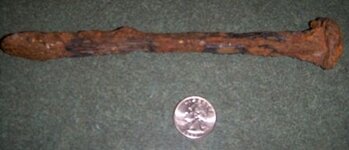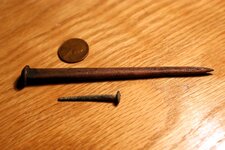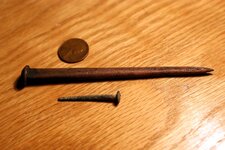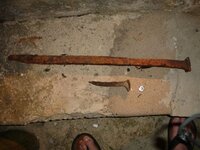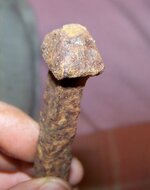angifogg
Full Member
- Apr 24, 2007
- 157
- 13
- Detector(s) used
- Bounty Hunter Pioneer 505
- Primary Interest:
- Relic Hunting
Found this at the beach today-Is it a Railroad Nail or a Ship Nail?
Thanks in advance for your suggestions
Thanks in advance for your suggestions


